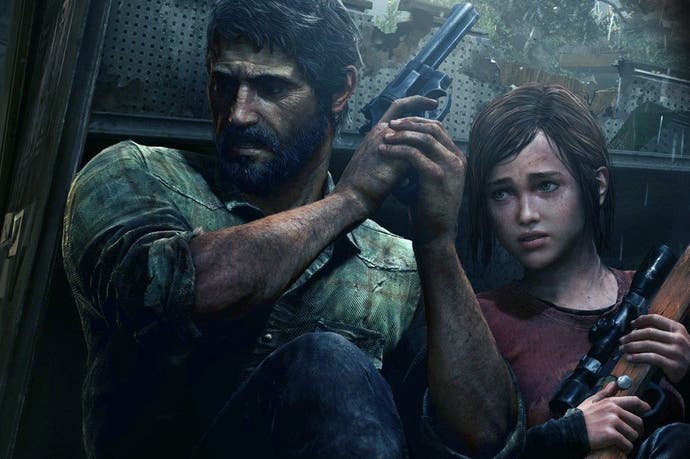Face-Off: The Last of Us Remastered
The double-dip dilemma. Should you buy the PS4 version if you already own it on PS3?
Striking at the opportune moment, Naughty Dog's award-winning The Last of Us is now available to PlayStation 4 owners in remastered form - giving both newcomers and double-dippers alike a chance to play the game in lush 1080p at 60 frames per second. For impressions of how the adventure holds up on next-gen hardware when played from a fresh perspective, be sure to check out our earlier tech analysis from Digital Foundry chief Richard Leadbetter. In this article however, we'll be addressing the returning crowd; indeed for those who loved the PlayStation 3 original, is there enough here to make the game's campaign worth another play-through? Is there more to it than just a resolution and frame-rate bump?
The first thing I'll say is that expectations going in were cautiously managed. I was disappointed to see the game absent from Sony's E3 spot this year, and Naughty Dog's roll-out of information prior to the expo proved treacle-like at best. In an earlier interview with Edge, creative director Neil Druckmann even conceded to the difficulty of translating the game's PS3-focused engine to PS4, where his team's emphasis was much less on adding new bells and whistles - and more on simply getting the code to run.
“We expected it to be hell, and it was hell,” Druckmann says. “Just getting an image onscreen, even an inferior one with the shadows broken, lighting broken and with it crashing every 30 seconds, that took a long time.” In the end, getting the game running as faithfully to the original as possible has proven a priority, alongside a simple image quality boost “akin to looking at a DVD versus Blu-ray.”
But having played the game extensively on patch version 1.00, and several hours of the day-one update 1.01, we can confirm this is a very stable, faithful revisiting of the original game. Not only that, but it's received upgrades beyond the bump to 1080p - an increase in resolution that makes it necessary to push draw distances out further, boost texture map quality, and add occlusion mapping to decals. For a close look at the game's evolution (and occasional side-steps) between PS3 to PS4, check out our head-to-head video and zoomer gallery below.
With under a year to turn this project around, it's clear there are some rocks left unturned on this PS4 re-release, but where attention has been paid the difference is huge. For example, there's a notable update to the opening Quarantine area, where building brickwork is vastly more defined and crisp. We also see zero texture pop-in issues as we walk around the jungles that skirt Bill's Town, with the PS4's high access-speed GDDR5 memory making level streaming a non-issue. This is as opposed to the PS3 game's reliance on pulling assets from optical and hard disk drives, which could produce the occasional pop-in.
However, even with a hardware advantage, most normal maps appear to be lifted straight from the PS3 original - not a bad thing necessarily, but perhaps a missed opportunity to really knock it out of the park. Given that the game weighs in at 43GB as-is (with a bulk of this space likely used up by its re-encoded 1080p60 cut-scenes), it's quite possible the size limits of Blu-ray were a consideration here. Fortunately the PS4 release also comes with a more refined texture filter method, which has a bigger impact on texture detail across the board than a bump in texture resolution.
When it comes to faithful adaptations, The Last of Us Remaster carries the game's ragdoll physics, per-object blur and alpha effects across in a tidy fashion. Less uniform is the PS4's adoption of its lighting engine, which translates in occasionally haphazard ways. In an early pursuit of an arms dealer, for example, we see the entire colouring of a scene shifted, while in other isolated cases we see walls inexplicably brightened.
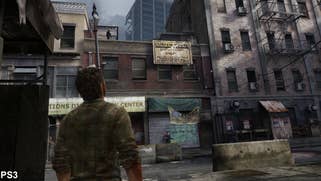
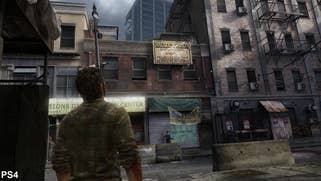
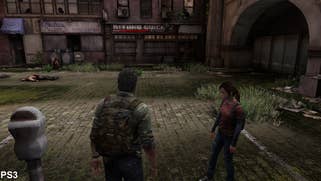

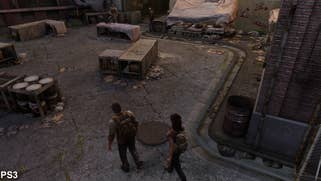
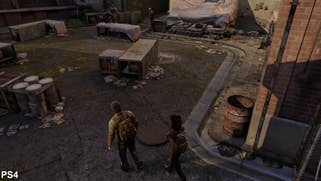
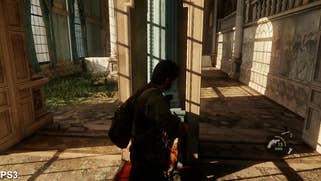



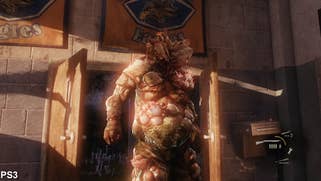
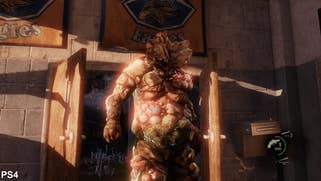

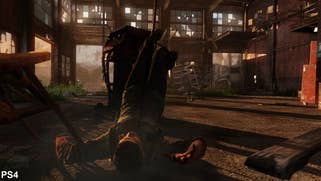
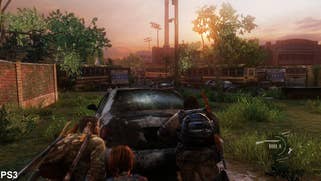
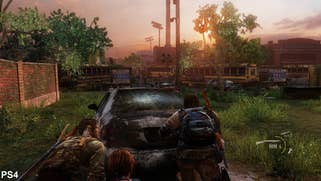
It's hardly a deal breaker, and you'd be hard-pressed to catch the difference without the PS3 release on the go for reference. But with oddities like this cropping up on occasion, it's clear Naughty Dog's struggles with translating a lighting engine geared towards the PS3's exotic hardware hasn't been a walk in the park.
For the most part, the game is otherwise as you remember it. The world is consistent with its internal logic, with the systems Naughty Dog forged through the years via the Uncharted series making the jump to PS4 - from the contextual animation system to the dynamic lighting and shadowing from Joel's torchlight.
The PS4's other additions are largely subtle. Shadows are added behind decals, such as draping fabrics on grabbable ledges, and also behind building supports. Curiously, we see that ambient occlusion is dialled back massively beneath foliage; for characters nearing walls, gone is the heavy dark shroud that would appear on PS3, and instead we're given a lighter shade. It's a welcome difference.
Performance compared to PS3 is night and day. Infrequent drops to 50fps (with 46fps being the lowest on record) are the worst of it, most notably during the initial Bloater boss battle. There are occasional dips besides this around flooded inner-city areas, but the experience is predominantly on the 60fps line. Compared to the PS3, with its variable 20-30fps readout, we're looking at a frame-time reading that sticks largely to a sharp, responsive 16ms, while the PS3 routinely dips as low as 50ms.
Alternative analysis:
All of which makes the last-gen version respectable to look at, but less so to control once you've enjoyed the fluid playback of the PS4 version. It's tempting to say that there's no going back, and this is especially true of multiplayer. Dips are limited to heavy Molotov cocktails exchanges involving multiple players - but the game benefits to no end from the boost in control response. For those that have tapped into the Factions mode's competitive delights, this is by far the biggest advantage of making the jump to the remastered release. Other enhancements are less prolific but still valuable - for example, audio outputs can be configured to cater for specific acoustic scenarios - TV, home theatre, studio reference and stereo headphones.
Naughty Dog also offers a 30fps toggle, which caps the frame-rate to half the game's top-end refresh. Other Sony first party releases let players dabble with a similar option, such as Killzone: Shadow Fall and infamous: Second Son, though in this case there's really no need. Drops from the 60fps target simply aren't frequent enough to justify it, whereas in the latest Killzone it helps to avoid the regular lurches between 30-60fps.
Of course, locking at 30fps results in a faultless delivery at exactly that rate. Even during the biggest stress-tests for the default 60fps setting, such as the testing Bloater encounter in the high school , there isn't a single frame dropped below the cap. Those upgrading to patch 1.01 on day one may notice a few changes, meanwhile. Taking up 142MB, this update adds a photo mode, plus improved shadow quality for those committed to enabling the 30fps option.
At 60fps the PS4's shadows are already clearer than the PS3's, but admittedly there are still some rough, pixelated spots. Standing your character near a wall exposed to direct sunlight tends to bring out the PS4 remaster's ugly side, but the 30fps toggle resolves this in an instant. At the flip of a switch, aliasing is removed from long straight lines projected onto walls, and more granular shadow details - such as plant-life - become sharp and defined. It's an issue most noticed around the Bill's Town section, where sunlight is at a low angle - though curiously not for shadows produced from the characters torchlight.
However, this comes at a cost besides the frame-rate cap. A shadow glitch is introduced on this setting, removing crucial shadow maps around interior areas. This is most keenly felt while travelling through the warehouses with Bill, where streaks of light line the corners of each room. It's an immersion-breaking glitch that disappears on returning to the 60fps mode; perhaps suggesting that the patch's enhanced 30fps mode could have benefitted from a little more testing. Hopefully this will be resolved in a forthcoming update.
On that note, we'll have to wait and see what happens. From a second play-through of the game at 30fps, we've noticed no other visual differences; textures, ambient occlusion and effects are entirely untouched. Given the massive performance head-room when running at this capped rate, it's tempting to imagine what extras Naughty Dog could have added here without breaking the budget; improved effects, or even super-sampling, for example.
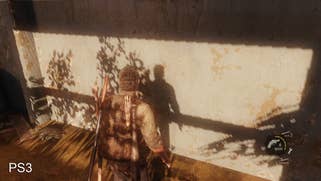

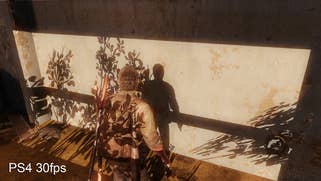
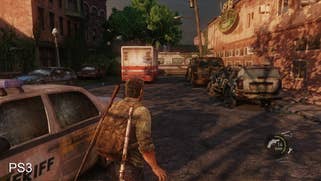
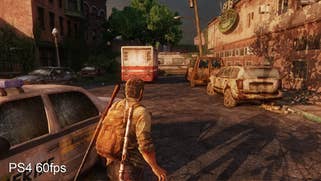
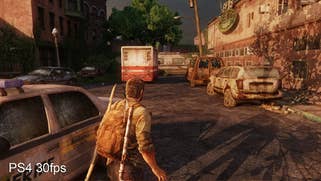
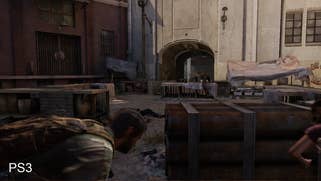
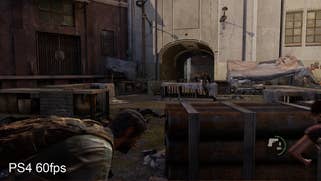

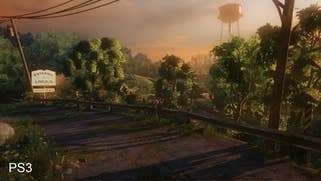
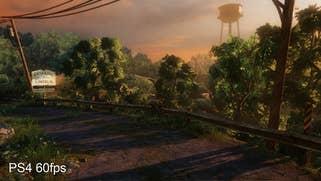
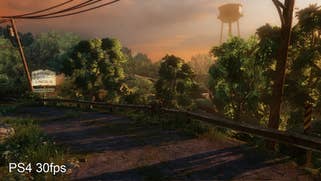
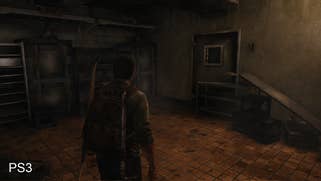
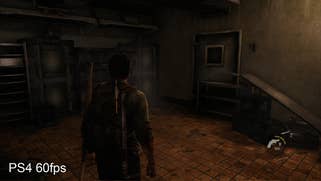
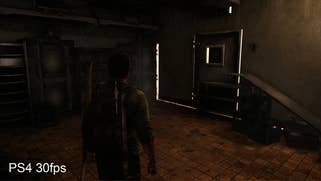
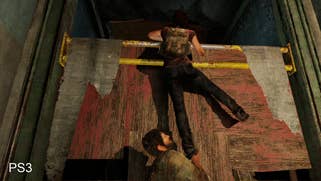
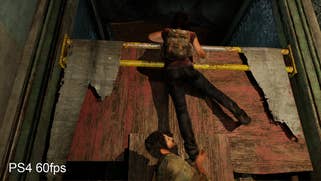

The Last of Us Remastered - the Digital Foundry verdict
A year later, and Naughty Dog brings its critical darling of 2013 to PS4 - a sturdy, if slightly under-embellished adaptation of a true last-gen classic that still manages to scale up beautifully onto Sony's new hardware. For those that haven't already seen through Joel and Ellie's adventure across a decaying clicker-filled America, there's no better time than the present - and this is undoubtedly the version to choose. But for those already warmly acquainted with the PS3 release, is it actually worth buying all over again? At its cheapest, the game can be acquired for £29.99 - stock permitting, but more generally prices are in the £35 region. That's a reduction compared to a standard PlayStation 4 release, but still a fairly substantial investment, with no discounts for existing PS3 owners.
From a visual standpoint, the 1080p boost and texture upgrades certainly go hand-in-hand to produce a cleaner, sharper looking game. The issue here is that actual efforts to improve upon the game's core are only occasional and demand close side-by-side inspection to really catch. Those expecting an overhaul to the game's visual setup - or even a limited once-over on the most obvious last-gen assets - may leave disappointed.
The fact that this release is indeed a pure remaster as opposed to something more akin to a remake tailored more towards the strengths of the PS4 hardware is likely to cause controversy. However, the ability to liberate the original game from the limitations of the PS3 hardware still produces a truly exceptional experience and having played through the game from start to finish last year, this second play-through was just as compelling as the first. Frame-rate issues were always the Achilles Heel of the PS3 version and despite some wobbles, the chance to play this enhanced release at 60Hz is irresistible. It's a transformative experience that works beautifully in the single-player game, but really comes into its own in the excellent Factions multiplayer, where the more consistent, tighter controller response makes all the difference.
Struggling to find every collectable item? Our walkthrough covers the lot.
